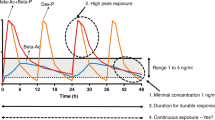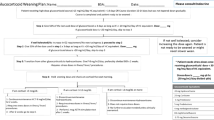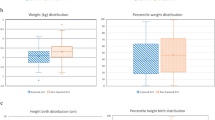Abstract
NEONATAL rats have been treated with cortisone acetate (Merck ; Roussel) in doses of 0.25–5 mgm./day subcutaneously, control litter mates being given the same dosage of suspending medium. The experiments were undertaken primarily to test the effect upon microglial immigration and transformation in the brain. Hortega's neonatal ‘fountains’ were found to be completely suppressed within 24–36 hr. of a single dose of 2.5 mgm. of cortisone, and in older animals myelination was retarded.
This is a preview of subscription content, access via your institution
Access options
Subscribe to this journal
Receive 51 print issues and online access
$199.00 per year
only $3.90 per issue
Buy this article
- Purchase on SpringerLink
- Instant access to full article PDF
Prices may be subject to local taxes which are calculated during checkout
Similar content being viewed by others
References
Karnofsky, D. A., Ridgway, L. P., and Patterson, P. A., Endocrin., 48, 596 (1951).
Hodges, J. R., J. Endocrin., 10, 173 (1954).
Halmi, N. S., and Barker, S. B., Endocrin., 51, 127 (1952).
Aterman, K., and Greenberg, K., Endocrin., 52, 510 (1953).
Heinemann, K., Endokrinol., 19, 1 (1937).
Zuckerman, S., in “The Suprarenal Cortex : Proceedings of the Fifth Symposium of the Colston Research Society, 1952”, ed. J. M. Yoffey (Butterworths Scientific Publications, 1953).
Sayers, M. A., Sayers, G., and Woodbury, L. A., Endocrin., 42, 379 (1948).
Author information
Authors and Affiliations
Rights and permissions
About this article
Cite this article
FIELD, E. Effect of Cortisone on the Neonatal Rat. Nature 174, 182 (1954). https://doi.org/10.1038/174182a0
Issue date:
DOI: https://doi.org/10.1038/174182a0



